1. Threat Detection and Analysis
AI systems can continuously monitor and analyze data from various sources, including satellites, drones, and ground sensors, to identify potential threats more rapidly and accurately than human operators. This early detection allows for timely defensive actions to neutralize threats before they can cause harm.
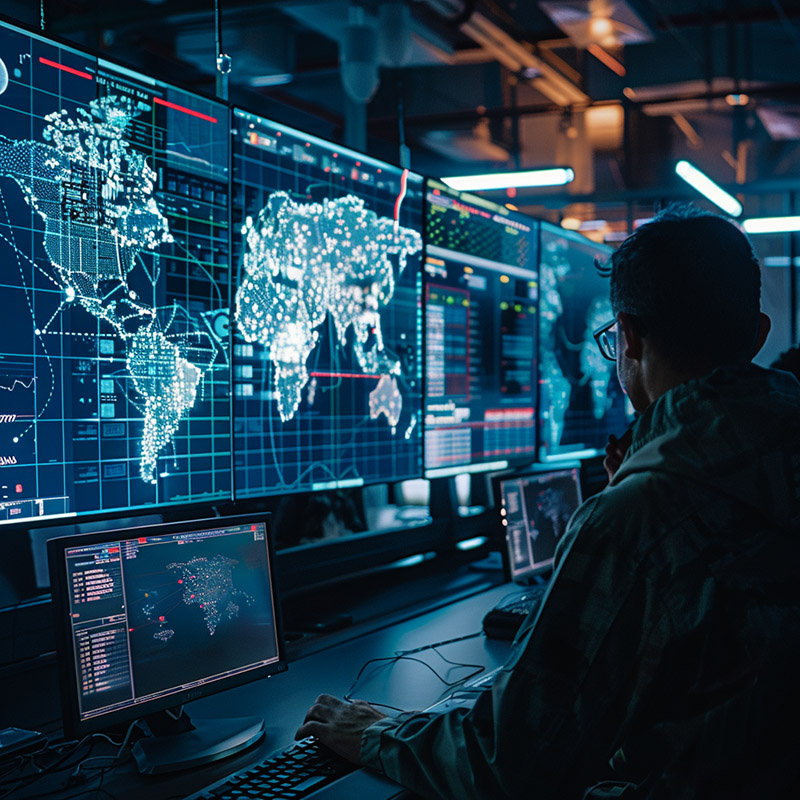
Threat Detection Before AI
Threat detection and analysis were heavily reliant on manual monitoring of intelligence inputs and sensor data, often leading to delayed responses due to the sheer volume of information. Human analysts had to sift through data from multiple sources, which could lead to oversight and slower reaction times to emerging threats.
Threat Detection After AI
With AI integration, the process of threat detection and analysis has become significantly faster and more accurate. AI algorithms can analyze data from countless sources simultaneously, identifying potential threats in real-time and prioritizing them based on severity and credibility. This allows for immediate action, significantly reducing the window for adversaries to exploit vulnerabilities and enhancing national security.
2. Cybersecurity Defense
AI algorithms can detect patterns indicative of cyber attacks, including those that are novel or rapidly evolving. By automating the detection and response to cyber threats, AI can secure military networks and critical infrastructure against espionage and sabotage.

Cybersecurity Before AI
Cybersecurity defenses were primarily rule-based, reacting to known threats and requiring constant updates to address new vulnerabilities. This reactive approach often left systems exposed to novel or rapidly evolving cyber threats, putting sensitive military data at risk.
Cybersecurity After AI
AI-powered cybersecurity systems proactively identify and neutralize threats by learning from each attempt to breach defenses, adapting to new tactics used by cyber adversaries. This dynamic approach to cybersecurity ensures military networks and critical infrastructure remain protected against even the most sophisticated attacks, maintaining operational integrity and safeguarding national security.
3. Autonomous Surveillance Systems
AI-powered drones and unmanned vehicles can conduct surveillance operations over vast areas, providing real-time data and analysis to military personnel. These autonomous systems can operate in environments that are too risky for humans, enhancing situational awareness and defensive readiness.
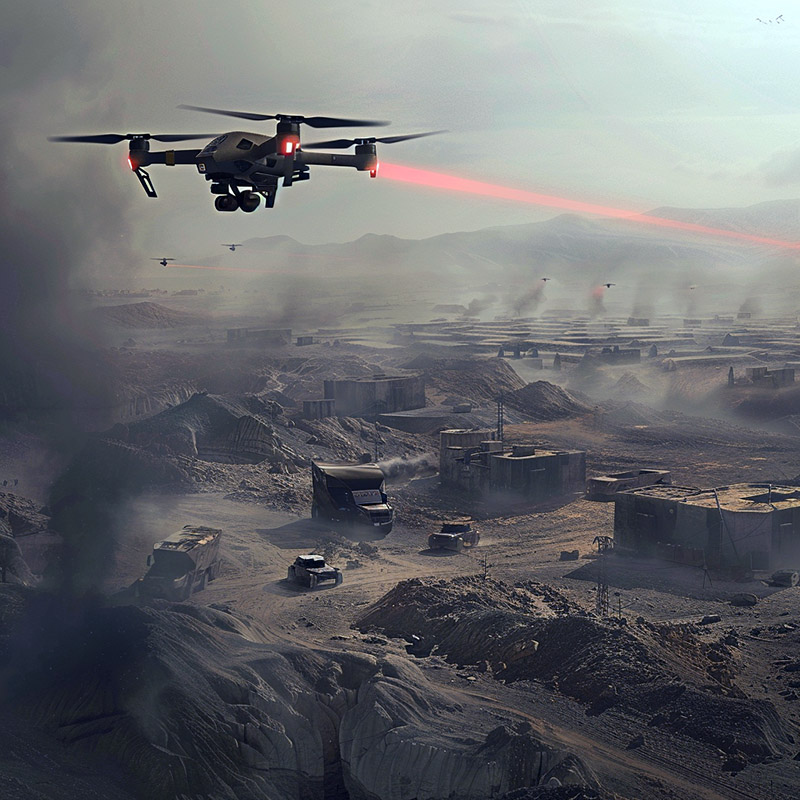
Surveillance Before AI
Surveillance operations were limited by human endurance and the need to operate in potentially hazardous environments, restricting the coverage and duration of surveillance activities. This often resulted in gaps in situational awareness and increased risk to personnel.
Surveillance After AI
AI-driven autonomous surveillance systems, including drones and unmanned vehicles, can operate around the clock in diverse environments, providing continuous coverage without putting human lives at risk. These systems enhance situational awareness, offering comprehensive monitoring capabilities that can adapt to changing conditions and threats, significantly improving defensive posture and operational safety.
4. Decision Support Systems
AI can process vast amounts of data to provide military decision-makers with actionable insights, risk assessments, and strategy recommendations. This support helps commanders make informed decisions quickly, optimizing defensive tactics and resource allocation.
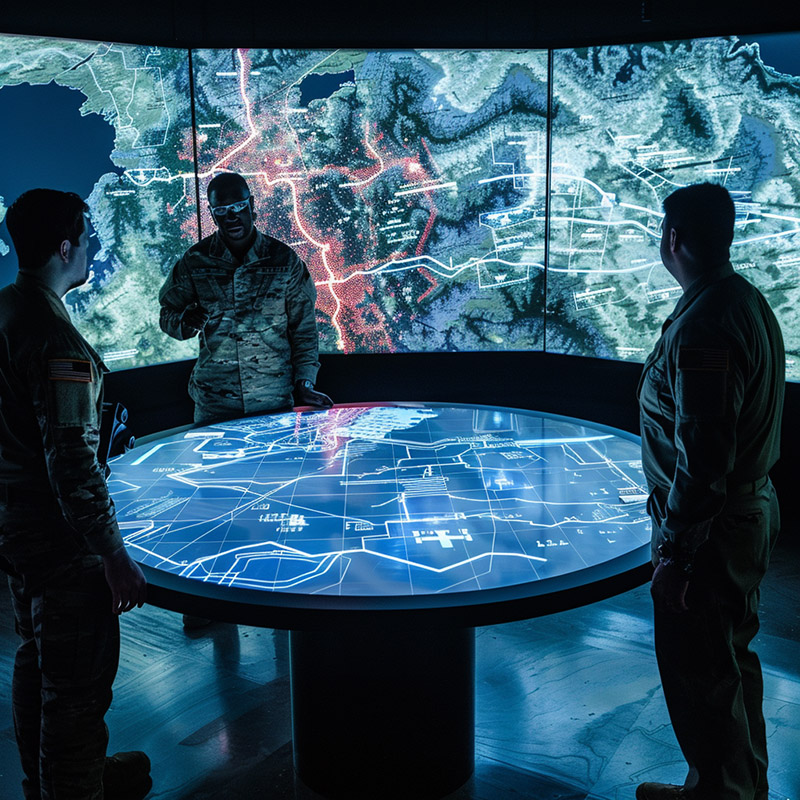
Decision Support Before AI
Decision-making in complex military operations often involved sifting through vast amounts of data under time constraints, potentially leading to oversight or analysis paralysis. Commanders had to rely heavily on their experience and intuition to make critical decisions.
Decision Support After AI
AI-enhanced decision support systems provide military commanders with real-time data analysis, actionable insights, and strategy recommendations. This support helps streamline the decision-making process, ensuring that decisions are based on comprehensive and up-to-date information, thereby enhancing the effectiveness of military operations and strategic planning.
5. Missile Defense Systems
AI enhances missile defense capabilities by predicting the trajectory of incoming threats and coordinating the deployment of countermeasures with greater accuracy and speed. This allows for more effective interception of missiles and other airborne threats, protecting assets and civilian areas.
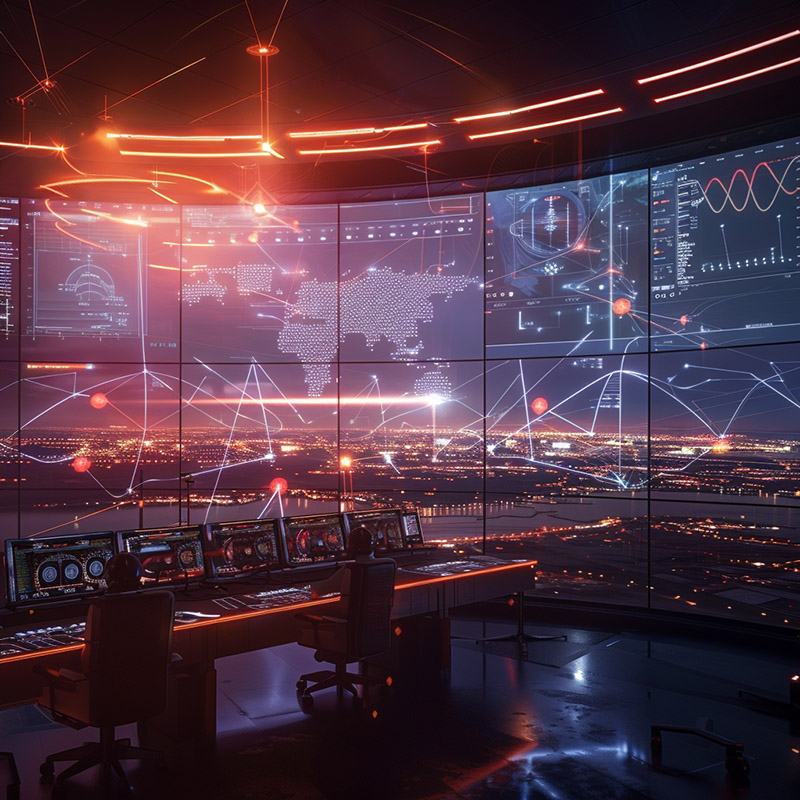
Missile Defense Before AI
Missile defense was challenged by the need to quickly and accurately intercept incoming threats, with human operators manually coordinating defense systems. The speed and complexity of missile attacks often strained existing defense capabilities, risking successful penetrations.
Missile Defense After AI
AI has transformed missile defense by automating threat detection, tracking, and interception guidance, significantly increasing the speed and accuracy of defensive responses. AI algorithms predict missile trajectories and optimal interception points, coordinating defense systems to neutralize threats efficiently, enhancing protection against missile attacks.
6. Electronic Warfare
AI systems can analyze electromagnetic signals to identify and counter electronic attacks, such as jamming or eavesdropping. By automating the detection and response to electronic threats, AI can protect communication and navigation systems, ensuring operational effectiveness.
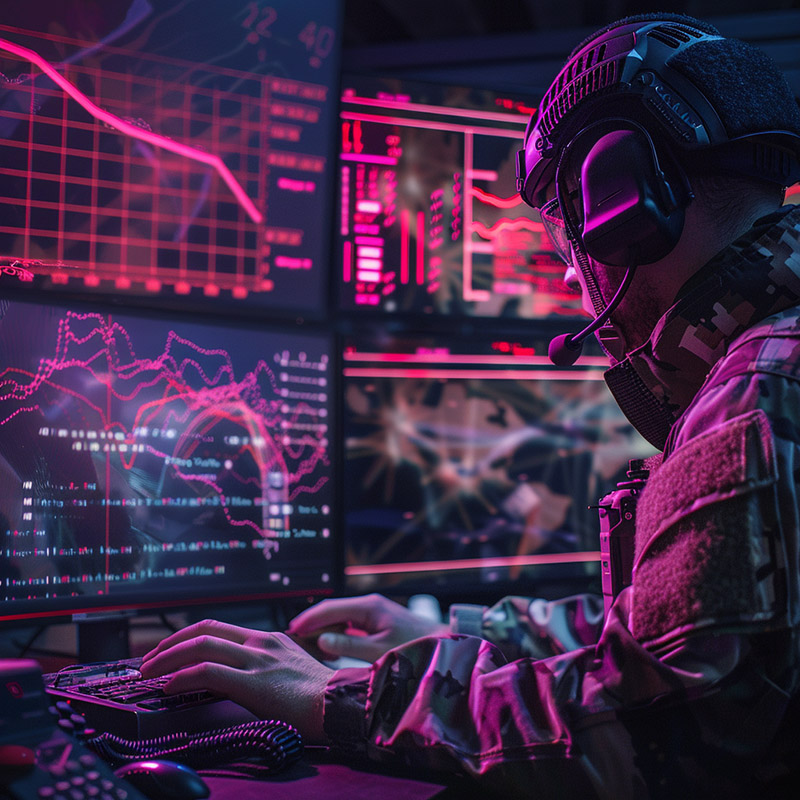
Electronic Warfare Before AI
Electronic warfare efforts to detect, analyze, and counter electronic threats were manually intensive, requiring expert operators to identify and respond to threats. The rapidly evolving nature of electronic warfare tactics often outpaced the ability of manual systems to adapt, leaving vulnerabilities exposed.
Electronic Warfare After AI
AI has revolutionized electronic warfare by automating the analysis and counteraction of electronic threats. It can quickly identify hostile electronic activities, such as signal jamming or surveillance, and deploy countermeasures in real-time. This capability ensures continuous protection of communication and navigation systems, maintaining operational effectiveness in contested environments.
7. Supply Chain and Logistics Optimization
AI can optimize military supply chains and logistics, ensuring that troops and equipment are adequately supplied in a timely manner. By predicting demand and automating inventory management, AI reduces the risk of supply shortages or excesses, enhancing operational readiness.

Logistics Before AI
Military logistics faced challenges in efficiently managing supply chains, often leading to excess inventory, shortages, or delays in critical supplies. Manual planning processes struggled to adapt to the dynamic nature of military operations, impacting readiness and operational efficiency.
Logistics After AI
AI optimizes military supply chains by predicting needs, automating inventory management, and identifying the most efficient transport routes. This results in timely delivery of supplies, minimized waste, and reduced logistical footprint, ensuring forces are adequately supported in all phases of operations, thereby enhancing readiness and sustainability.
8. Automated Target Recognition
AI technologies can quickly identify and classify potential targets from reconnaissance imagery, reducing the time between target identification and engagement. This capability supports defensive measures by allowing military forces to react more swiftly to emerging threats.
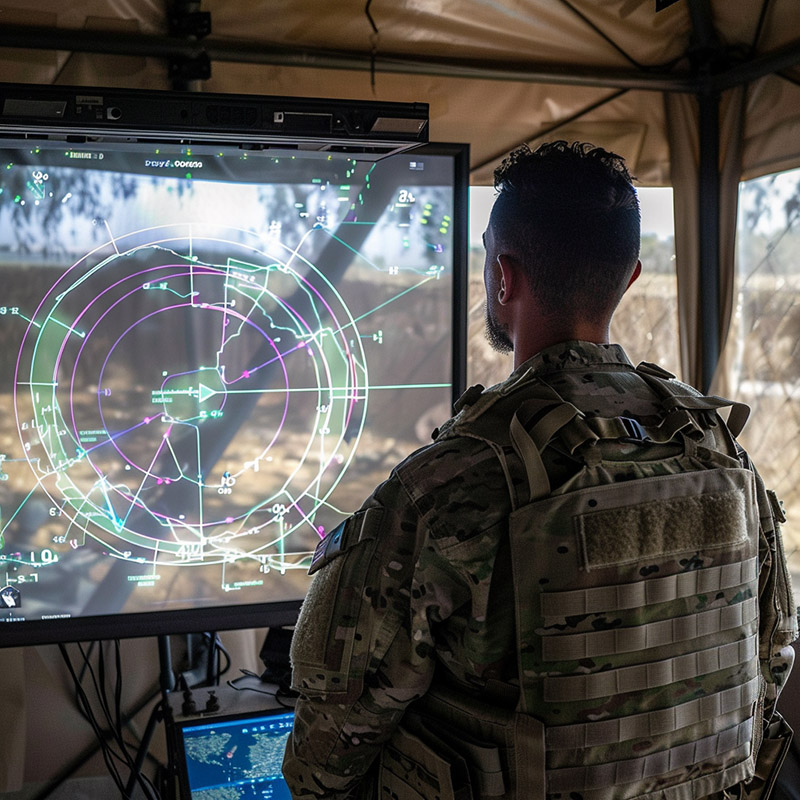
Target Recognition Before AI
Target recognition in reconnaissance imagery required skilled analysts to manually review and identify potential threats, a time-consuming process with a risk of human error, potentially delaying critical response times.
Target Recognition After AI
AI-powered automated target recognition systems rapidly analyze imagery, accurately identifying and classifying potential targets much faster than manual processes. This capability allows for quicker decision-making and response to threats, significantly improving the timeliness and effectiveness of military actions.
9. Information Security and Encryption
AI algorithms can strengthen information security by generating complex encryption keys and detecting vulnerabilities in military communication systems. This ensures the confidentiality and integrity of sensitive military communications, protecting them from interception or manipulation.
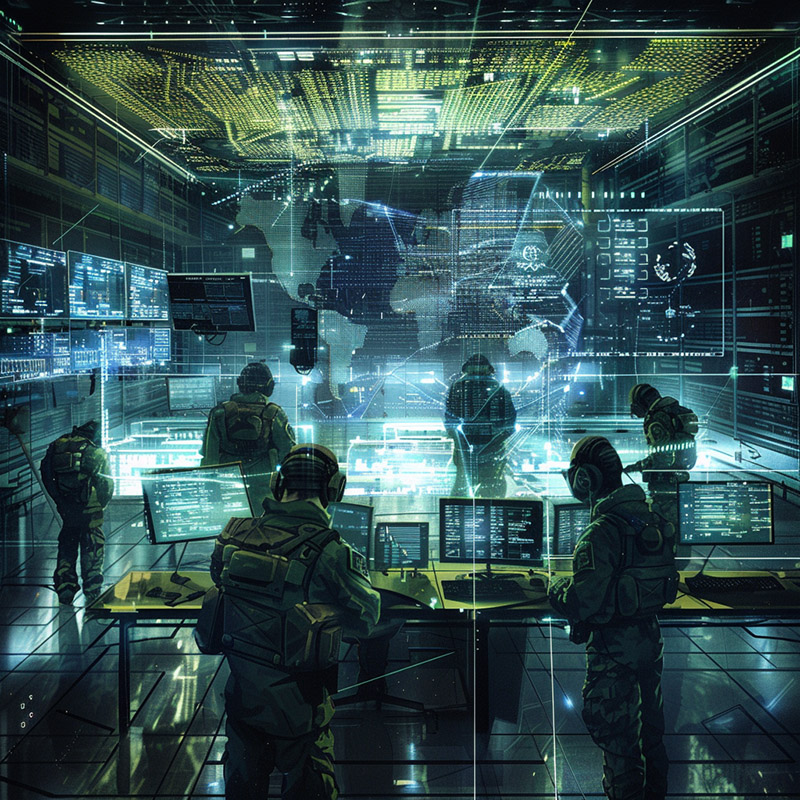
Information Security Before AI
Ensuring the security of military communications involved manual encryption methods and constant vigilance to protect against interception and decryption by adversaries. This labor-intensive process often struggled to keep pace with the sophistication of cyber threats.
Information Security After AI
AI enhances information security by automatically generating and managing complex encryption keys, making military communications more secure against interception and decryption attempts. AI-driven systems also monitor for vulnerabilities in real-time, ensuring that sensitive information remains protected, thereby maintaining operational security and information dominance.
10. Training and Simulation
AI-driven simulations and virtual reality training programs can prepare military personnel for a wide range of scenarios, including defensive operations against unconventional threats. These training tools adapt to the learner's progress, providing personalized instruction that improves readiness and performance.
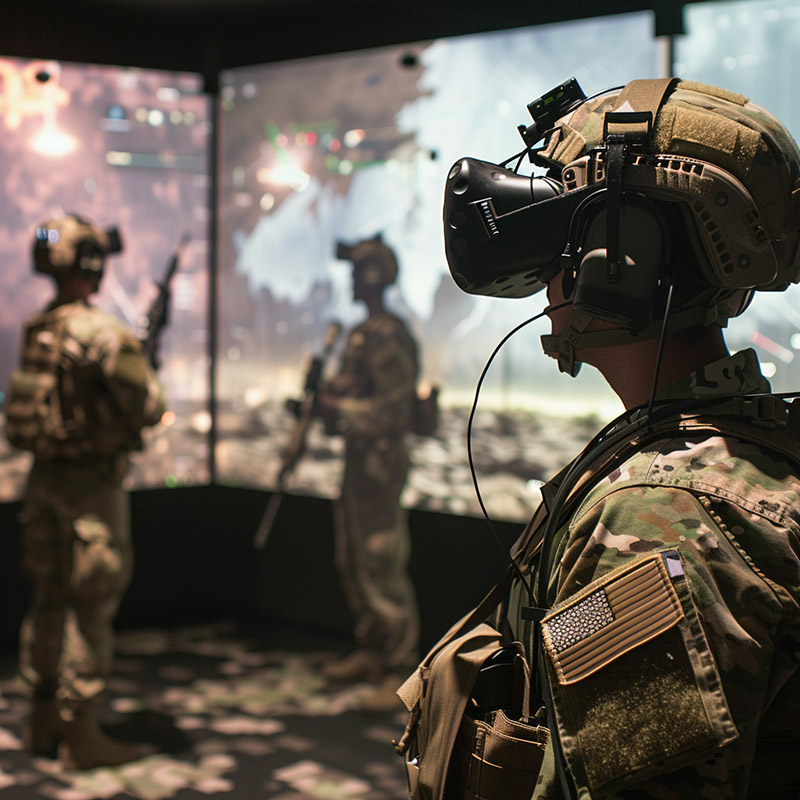
Training Before AI
Military training relied heavily on physical exercises and simulations that could not fully replicate the complexities of modern combat environments. This traditional approach was resource-intensive and could not be easily adapted to individual learning needs or emerging threats.
Training After AI
AI-driven training and simulation environments provide hyper-realistic, adaptable scenarios that closely mimic contemporary and future combat conditions. These systems offer personalized training that adjusts to the learner's progress, ensuring that military personnel are better prepared for a wide range of scenarios, enhancing overall force readiness and effectiveness in rapidly evolving operational contexts.